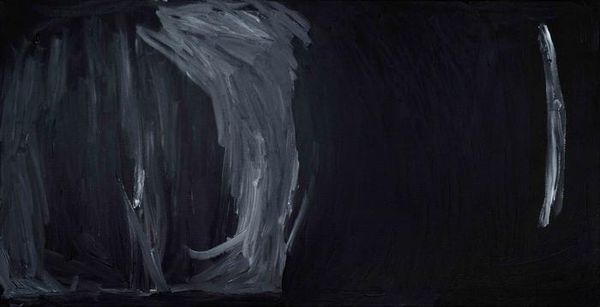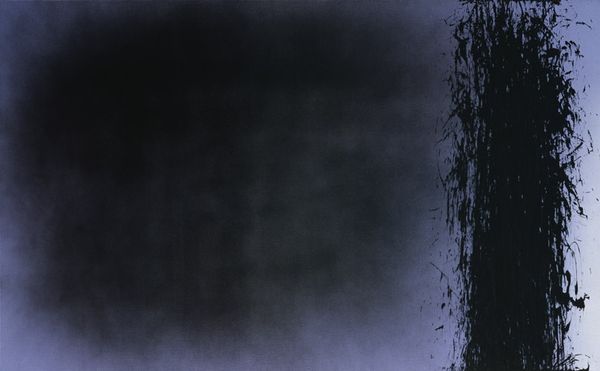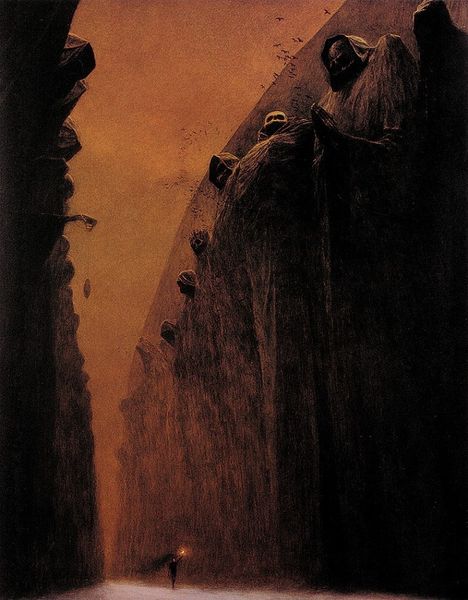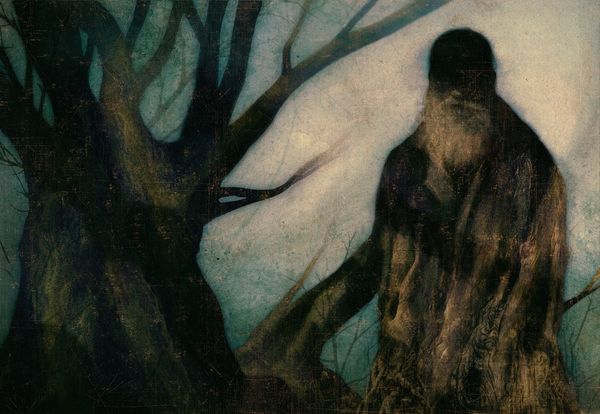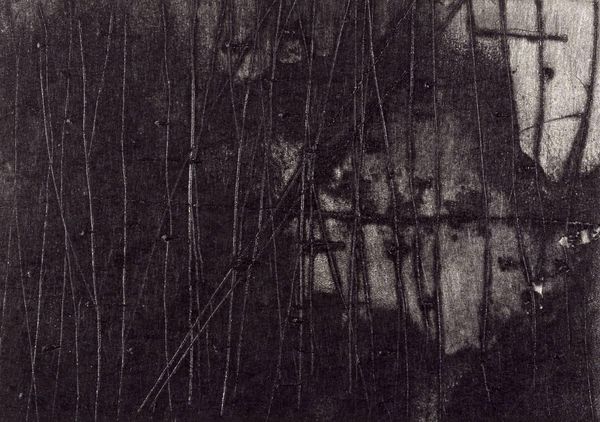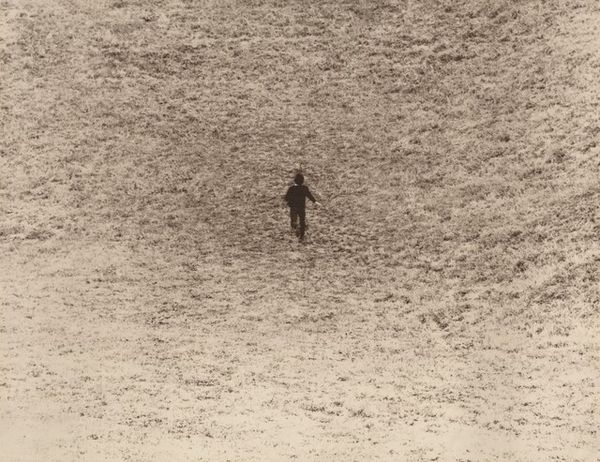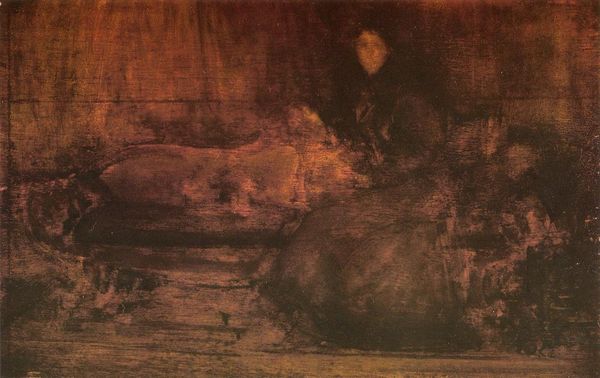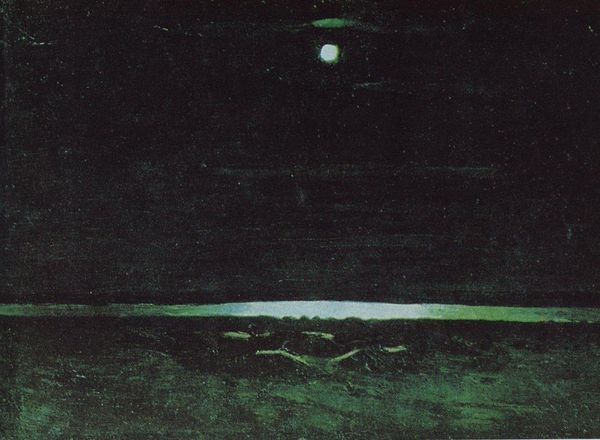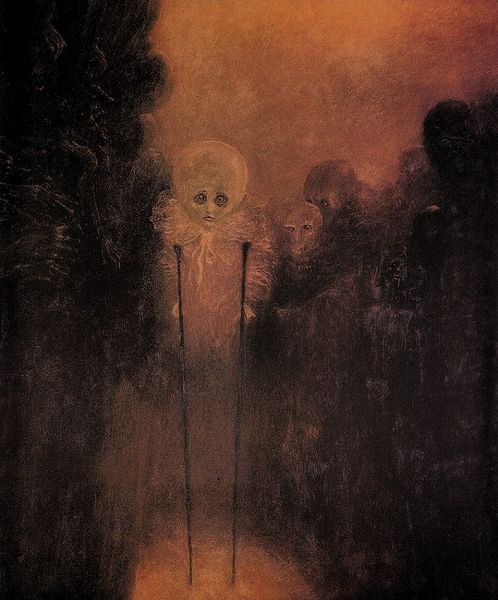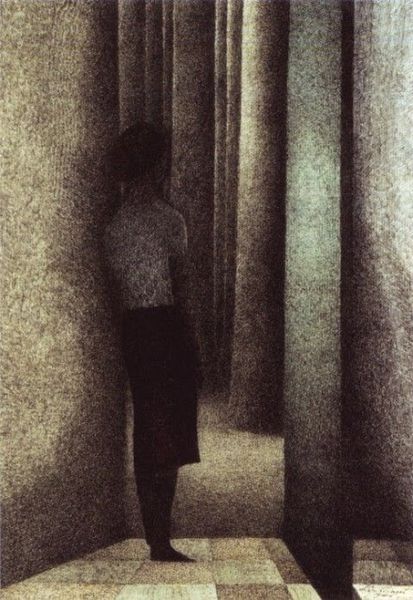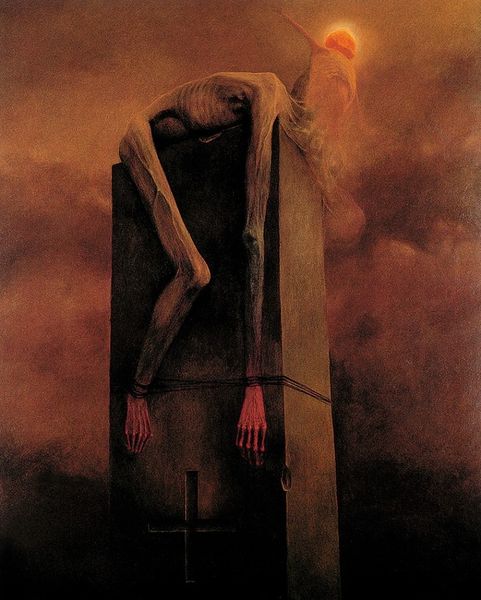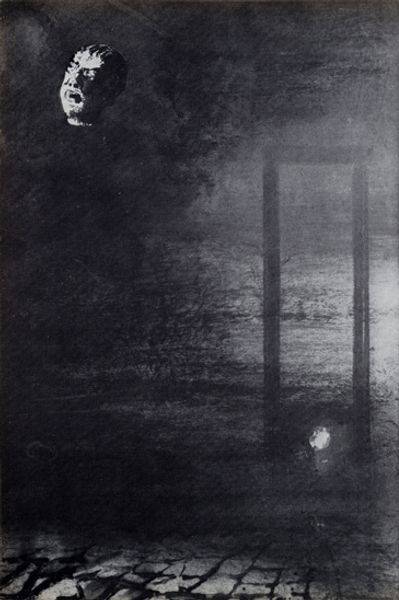
Dimensions: 149 x 210 cm
Copyright: Public domain
Editor: Here we have Nikolai Ge’s 1891 oil painting, "Conscience. Judas," housed at the Tretyakov Gallery. It's dominated by shadow; a lone figure stands near a dim, watery path. What strikes me most is the sheer drama of light and darkness. What do you see in this piece? Curator: The dramatic interplay of chiaroscuro is undeniably the most striking formal element. Consider how the artist deploys light not merely to illuminate, but to sculpt the very emotional terrain of the painting. The figure, ostensibly Judas, is not just present, but *formed* by the shadows that cling to him. Note how these dense blacks contrast with the pale, almost spectral light on his form and the path before him. Where does this light seem to originate? Editor: It almost seems to emanate from the path itself, but that wouldn't be realistic. Maybe it's supposed to be some sort of divine illumination, highlighting his internal struggle? Curator: Precisely. Forget what is being represented—Judas’ betrayal, the biblical story—and think only about how it's depicted. Ge's application of paint is rough, almost agitated. Notice the direction of the brushstrokes. Do they seem random or intentional? Editor: Intentional. They seem to swirl and converge around the figure, emphasizing the turmoil. So you're saying the very materiality of the paint contributes to the meaning? Curator: Indeed. The impasto, or thick application of paint, in areas, versus the thin washes elsewhere, creates a textured surface that engages the viewer’s eye and mirrors the tormented state of Judas’ conscience. Forget about any narrative or reference outside of what is directly in front of you. It's about *how* not *what*. Editor: It's amazing how much meaning can be derived from simply analyzing the visual elements and painting techniques themselves! I hadn't considered how the paint itself contributed to the overall drama. Curator: It shows the power of formal analysis – how attention to composition, light, and brushwork unveils layers of meaning perhaps missed in a purely narrative reading.
Comments
No comments
Be the first to comment and join the conversation on the ultimate creative platform.


